Engaging trailers are crafted to captivate audiences while effectively conveying the essence of the content. By following a clear structure, these trailers enhance viewer interest through relatable characters, intriguing plot hooks, and compelling soundtracks, fostering emotional connections. Understanding the target audience is crucial, as it allows for tailored content that resonates with potential viewers based on their demographics and viewing habits.
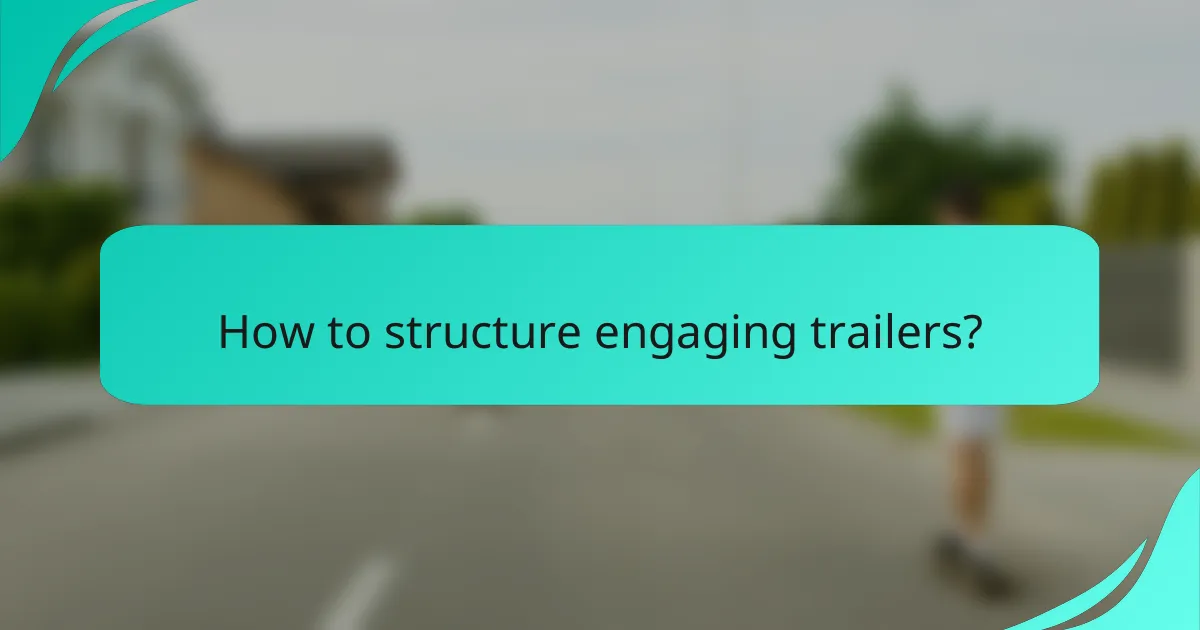
How to structure engaging trailers?
Engaging trailers are structured to captivate audiences and convey the essence of the content effectively. A well-organized trailer typically follows a clear framework that enhances viewer interest and anticipation.
Three-act structure
The three-act structure is a classic storytelling framework that can be effectively applied to trailers. This structure includes a setup, confrontation, and resolution, allowing viewers to grasp the narrative arc quickly.
In the first act, introduce the main characters and the setting, establishing the stakes. The second act should present the conflict or challenge, building tension. Finally, the third act offers a glimpse of the resolution, leaving the audience eager for more.
Key visual elements
Visual elements are crucial in making trailers engaging. High-quality imagery, dynamic editing, and striking color palettes can significantly enhance the appeal of a trailer.
Incorporate compelling visuals that reflect the tone of the content. Use close-ups to convey emotion and wide shots to establish context. Additionally, consider the use of graphics or text overlays to highlight key information or themes.
Emotional pacing
Emotional pacing is essential for maintaining viewer interest throughout the trailer. A well-paced trailer alternates between moments of intensity and quieter scenes to create a rhythm that resonates with the audience.
Start with a hook that grabs attention, then build tension gradually before delivering impactful moments. Ensure that the pacing aligns with the emotional journey you want the audience to experience, avoiding abrupt shifts that can disrupt engagement.
Call to action
A strong call to action (CTA) is vital for directing viewer response after watching the trailer. The CTA should be clear and compelling, encouraging the audience to take the next step, whether that’s watching the full content or visiting a website.
Place the CTA strategically at the end of the trailer, using persuasive language and visuals to reinforce the message. For example, phrases like “Don’t miss out” or “Watch now” can effectively motivate viewers to engage further.
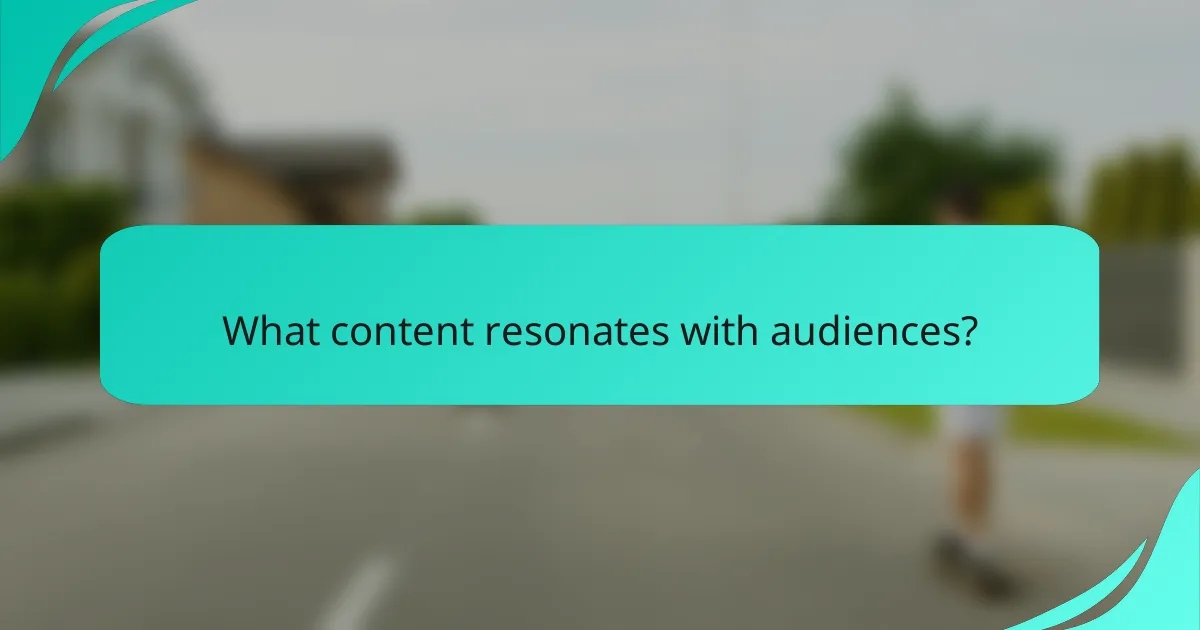
What content resonates with audiences?
Content that resonates with audiences typically includes relatable characters, intriguing plot hooks, and a compelling soundtrack. These elements work together to create emotional connections and enhance viewer engagement.
Character introductions
Effective character introductions are crucial for audience engagement. They should establish clear motivations and relatable traits that viewers can connect with, often within the first few seconds. For example, a brief glimpse of a character’s struggle or aspiration can create immediate empathy.
Consider using visual cues and dialogue snippets to reveal personality traits quickly. This approach helps audiences form attachments and invest emotionally in the characters’ journeys.
Plot hooks
Plot hooks are essential for grabbing attention and maintaining interest. A strong hook presents a conflict or mystery that prompts viewers to want to know more. This could be a dramatic event, a question left unanswered, or a unique setting that piques curiosity.
When crafting plot hooks, aim for clarity and intrigue. A well-placed question or a shocking moment can effectively draw viewers in, making them eager to watch the full story unfold.
Soundtrack significance
The soundtrack plays a vital role in setting the tone and enhancing emotional responses. Music can amplify tension, evoke nostalgia, or create a sense of wonder, significantly impacting how audiences perceive the trailer. Choosing the right genre and tempo is crucial for aligning the music with the trailer’s mood.
Consider using recognizable songs or impactful scores that resonate with the target audience. A well-chosen soundtrack not only complements the visuals but also reinforces the overall message, making the trailer more memorable.
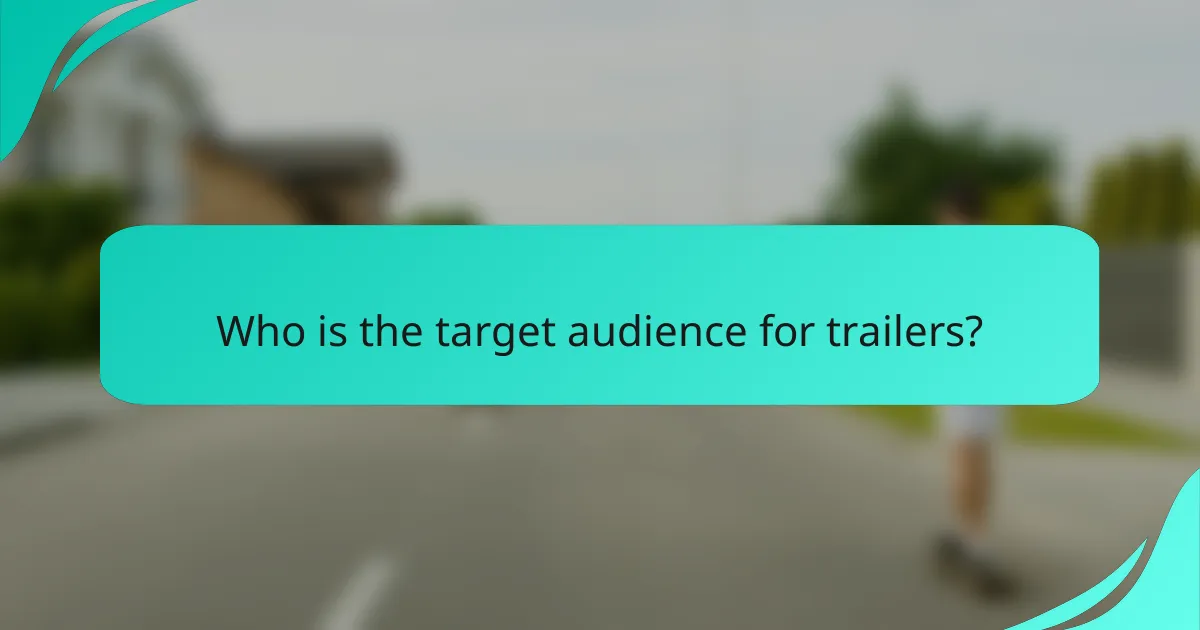
Who is the target audience for trailers?
The target audience for trailers typically includes potential viewers who are likely to engage with the content being promoted. This audience can be segmented based on various factors such as demographics, psychographics, and viewing habits.
Demographic analysis
Demographic analysis focuses on quantifiable characteristics of the audience, such as age, gender, income, and education level. For instance, a trailer for a superhero movie may target younger audiences, typically between 18 and 34 years old, while a drama might appeal more to adults aged 30 and above.
Understanding demographics helps in crafting trailers that resonate with specific groups. For example, trailers aimed at families might emphasize humor and heartwarming moments, while those targeting young adults may highlight action and adventure.
Psychographic profiling
Psychographic profiling delves into the audience’s interests, values, lifestyles, and attitudes. This analysis can reveal why certain viewers might be drawn to particular genres or themes. For example, a trailer for a horror film might appeal to thrill-seekers who enjoy adrenaline-pumping experiences.
By identifying psychographic traits, marketers can create more engaging trailers that speak directly to the audience’s motivations. For instance, a romantic comedy trailer may focus on themes of love and relationships, appealing to viewers who value connection and emotional storytelling.
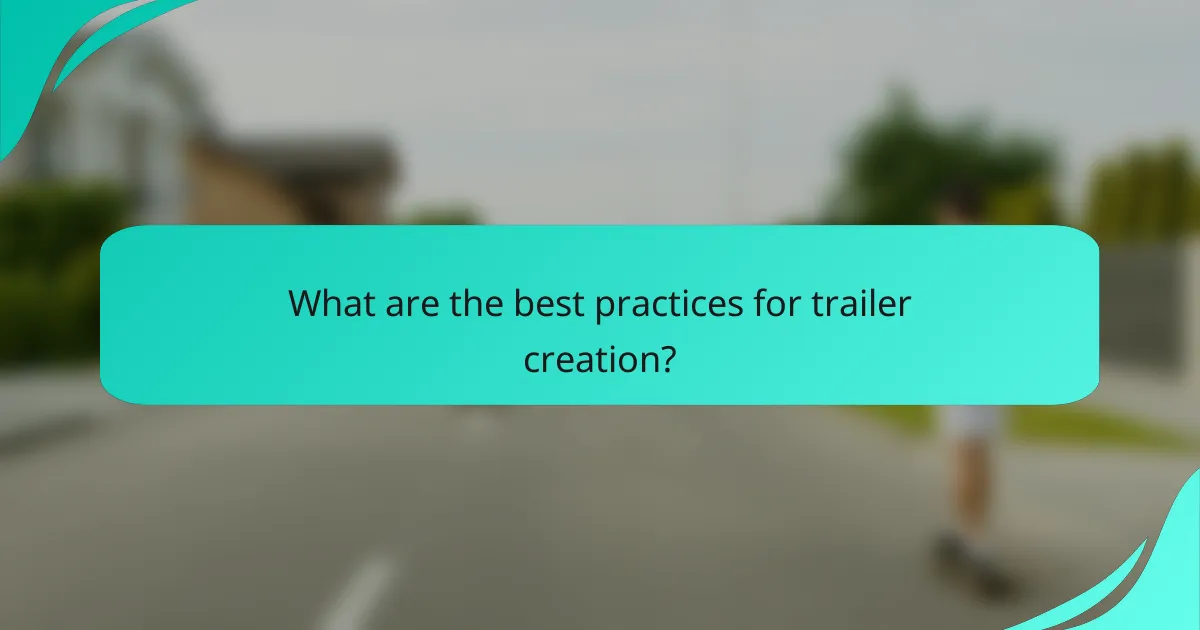
What are the best practices for trailer creation?
Best practices for trailer creation focus on engaging the audience while effectively conveying the essence of the content. A well-crafted trailer should balance excitement and information, ensuring viewers are intrigued and informed about what to expect.
Length and duration guidelines
Trailers typically range from 30 seconds to 2 minutes, depending on the platform and content type. Shorter trailers are often more effective for social media, while longer ones can provide deeper insights for film or series promotions.
Consider the target audience’s attention span; aim for concise storytelling that captures interest quickly. Avoid excessive length, as trailers that exceed 2 minutes may lose viewer engagement.
Visual storytelling techniques
Effective visual storytelling in trailers combines striking imagery with a coherent narrative flow. Use compelling visuals that highlight key moments, characters, or themes to draw viewers in.
Incorporate techniques such as dynamic editing, color grading, and sound design to enhance emotional impact. For instance, quick cuts can create excitement, while slower transitions may evoke contemplation.
Testing and feedback methods
Testing trailers with target audiences is crucial for refining content. Utilize focus groups or online surveys to gather feedback on elements like pacing, emotional resonance, and clarity of the message.
Consider A/B testing different versions of the trailer to determine which resonates better with viewers. Analyze engagement metrics such as view counts and shares to gauge overall effectiveness and make necessary adjustments.
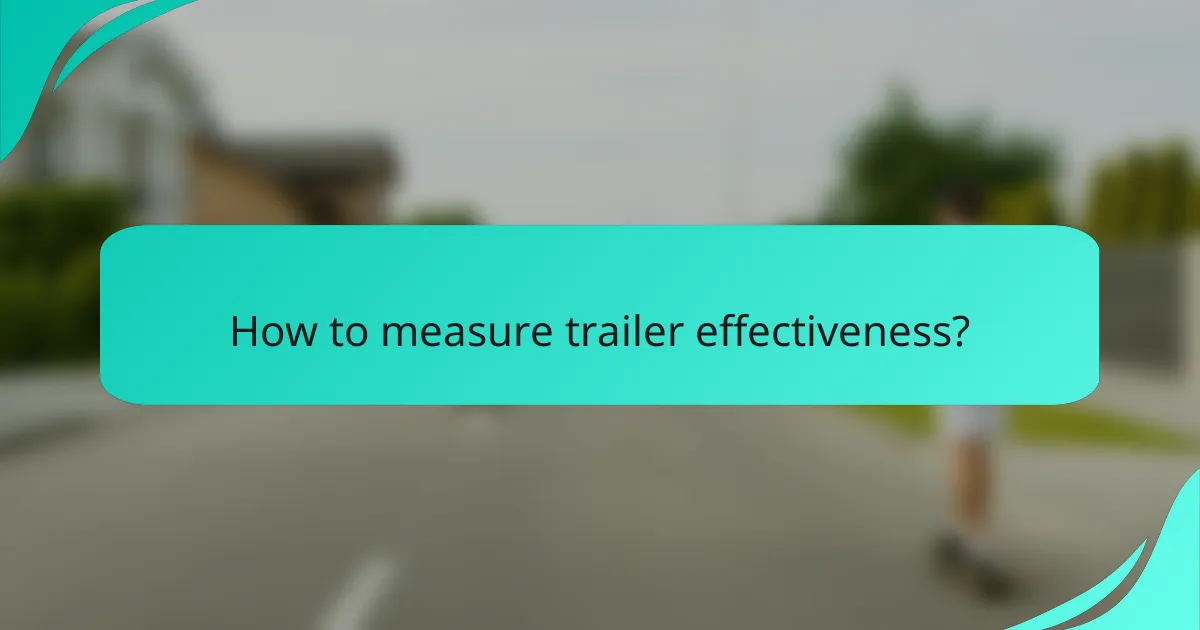
How to measure trailer effectiveness?
Measuring trailer effectiveness involves evaluating how well a trailer engages its audience and drives desired actions. Key metrics include engagement levels, conversion rates, and audience retention statistics, which provide insights into a trailer’s impact and areas for improvement.
Engagement metrics
Engagement metrics assess how viewers interact with a trailer, including views, likes, shares, and comments. High engagement often indicates that the trailer resonates with its target audience. For example, a trailer that garners thousands of views and a significant number of shares is likely effective in capturing attention.
To measure engagement, consider using tools like social media analytics or video platform insights. Aim for a benchmark where engagement rates are in the low double digits as a sign of a successful trailer.
Conversion rates
Conversion rates reflect the percentage of viewers who take a desired action after watching a trailer, such as purchasing tickets or signing up for a newsletter. A strong conversion rate indicates that the trailer effectively motivates viewers to act. Typical conversion rates for trailers can range from 2% to 10%, depending on the content and target audience.
To improve conversion rates, ensure that the trailer includes clear calls to action and is optimized for the platforms where it is shared. Avoid overly complex messaging that may confuse potential viewers.
Audience retention statistics
Audience retention statistics show how long viewers stay engaged with a trailer before dropping off. High retention rates suggest that the trailer maintains viewer interest throughout its duration. Aim for retention rates above 50% for effective trailers, especially in the first 30 seconds, which is critical for capturing attention.
To enhance audience retention, focus on creating compelling openings and maintaining a strong narrative flow. Analyze drop-off points to identify sections that may need improvement, such as pacing or content relevance.
